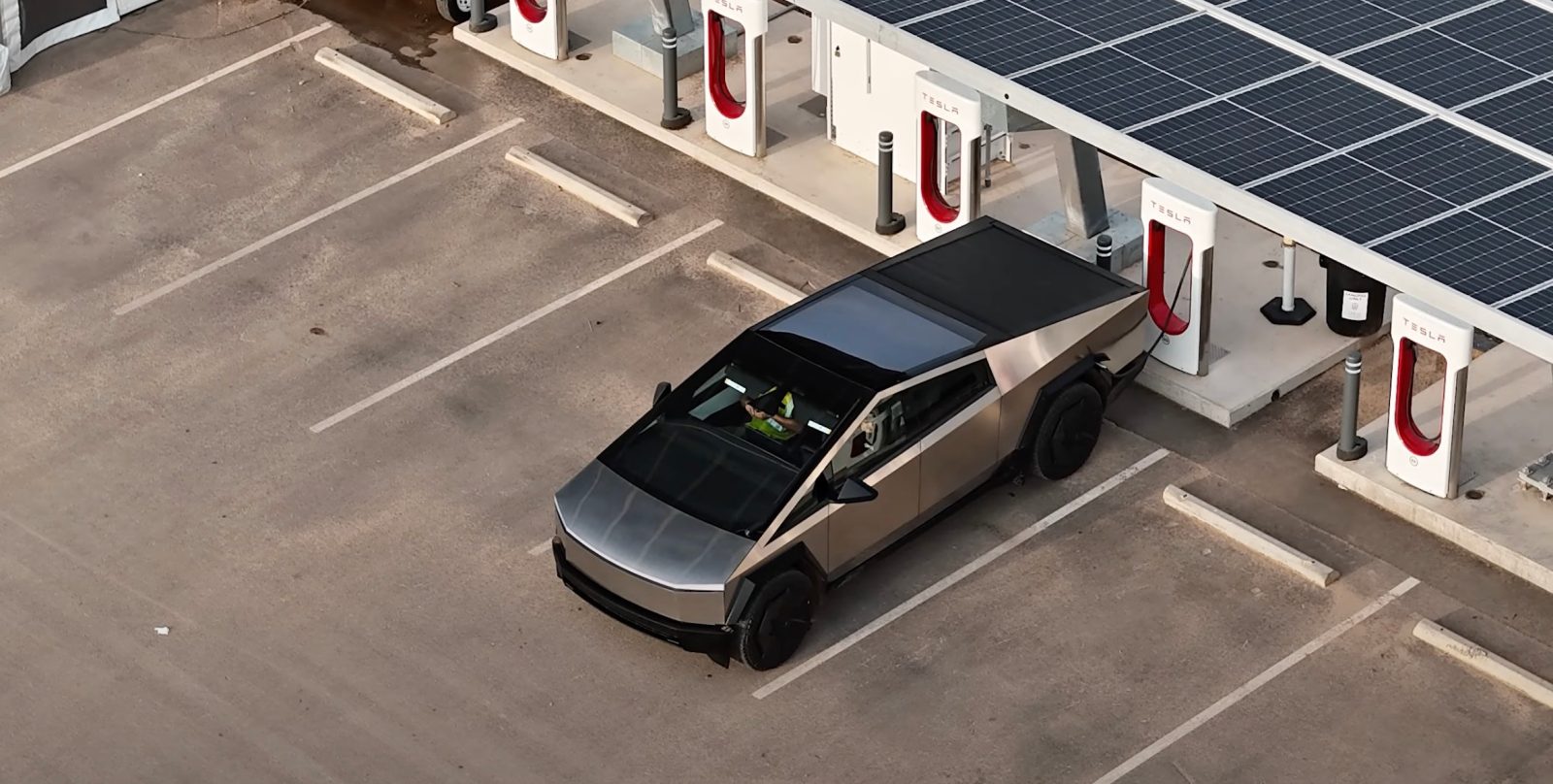
Tesla’s hot new flagship vehicle, the Cybertruck, comes with some big charging improvements. But those improvements are incompatible with most of Tesla’s existing Supercharger network, and now that Tesla is pulling back on its Supercharger rollout, it may leave Cybertruck out in the cold.
Last week, Tesla abruptly fired its entire Supercharging team, leading to an immediate pullback in Supercharger installation plans.
Tesla CEO Elon Musk says that “Tesla still plans to grow the Supercharger network, just at a slower pace for new locations and more focus on 100% uptime and expansion of existing locations” (according to Tesla’s website, Superchargers currently have 99.95% uptime).
The focus on existing locations is important, because Tesla’s Supercharger is in need of upgrades. And one major reason for that is its Cybertruck, which is large and barely fits in a lot of current Supercharger spots, not to mention that the system currently lacks compatibility with some of the Cybertruck’s main charging benefits.
The Cybertruck comes with 800-volt charging capability, which is different from most other EVs that run at 400-volts. It can still charge on a 400V charger, but an 800V charger should offer faster speeds (which is important, because Cybertruck’s 400V charging speed isn’t great so far).
But most of Tesla’s Superchargers don’t support 800V – at least the ones from the previous three generations. Tesla’s new V4 Superchargers do support 800V charging, but they still make up a small percentage of Supercharger sites.
Not only does V4 support 800V it also has a longer cable. Tesla’s V1-V3 Superchargers have cables that only reach a few feet from the charging unit, meaning you need to back in pretty close to them in order to plug in.
This has created a bit of a problem for Cybertruck, which is much bigger than other Tesla vehicles. We spotted this as an issue before the Cybertruck was even released, with a video of a Cybertruck having to back right up against a pole in order to reach its charging port, which is somewhat awkwardly placed along the wheel well of the truck.
The 10-foot-long V4 cable makes it easier for big vehicles like the Cybertruck to fit into the spot, and is also important for non-Tesla vehicles which may not have their charge port in the same rear-left quadrant as Teslas do. This is particularly important as more brands are planned to gain access to Supercharging soon (or at least, they were, prior to the team being fired).
Top comment by Jim Rea
"Tesla’s new V4 Superchargers do support 800V charging, but they still make up a small percentage of Supercharger sites."
Yes, I think we can all agree that 0% is a small percentage.
For these reasons (and some others, like lack of pull-through stations), we declared in November that Tesla’s charging network is not ready for Cybertruck. And in order to get it ready, Tesla needs to work on installing new chargers that are more friendly to Cybertrucks and vehicles from other brands, and on upgrading existing sites to add V4 chargers.
The only problem is… Tesla just fired the entire team responsible for that. There are a few people retained from the team who have been moved to other divisions, and given that Tesla still intends to install some new stations and expand existing locations it must still have some personnel left to do that.
But with so many people fired from the Supercharging team, we can’t see any way there there won’t be a slowdown in new installations of V4 stations, and in upgrades of existing stations. Firing all of the organization’s expertise in a certain part of the business is not how you improve deployments of that part of the business. It’s just hard to believe that Musk says installations will continue when Tesla can’t even remember who they’re working with on current installations.
So, right as Tesla has started to ramp production of its hot new vehicle which its currently selling for over-six-figure prices, it’s also made a decision that will inevitably make it more difficult to leverage that vehicle’s unique charging advantages – or even to fit into a Supercharging spot at all.
FTC: We use income earning auto affiliate links. More.






Comments